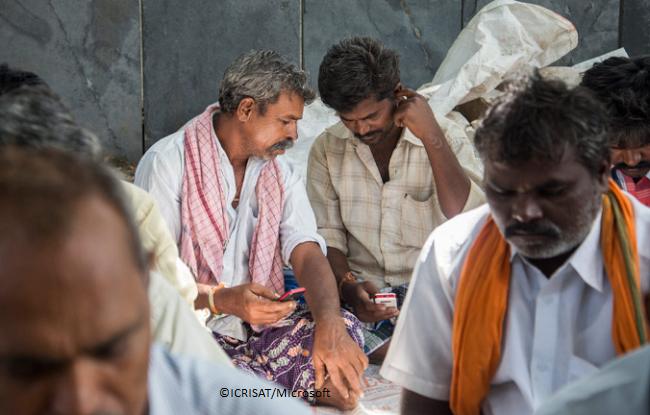Harnessing the power of AI to transform agriculture
11/08/2019
The world is facing an imminent challenge – the world population is expected to grow from 7.7 billion to 10 billion by 2050; today (with a population of 7.7) more than 820 million people are hungry globally.
Does this mean that the world needs to produce more food to feed the hungry? Evidence seems to suggest that food production should increase. However, many of the farmers in the global south are aged and very few youths are replacing them. Can technology help in ensuring increased agricultural productivity?
In a recent blog, Jean –Philippe Courtois, President at Microsoft Global Sales opines that Artificial Intelligence can be part of the solution.
Already many farmers managing large-scale operations are embracing innovative technologies such as self-driving tractors that use GPS, satellite imagery, and AI to plant more efficiently.
Sensors and machine learning are helping such farmers make smarter decisions about when to irrigate and how much fertilizer to apply. How about small scale farmers, many who live in low-resource countries, can they benefit from these technologies?
The blog provides examples;-
The AI Sowing App - improving the groundnut harvest

Farmers accessing the information from the Sowing App Photo: S Punna, ICRISAT |
|
A pilot project in Andhra Pradesh on the southeast coast of India offers a hint of what is becoming possible. In an area of small, subsistence farms where growers have always relied on a combination of ancient traditions and guesswork to decide when to plant, Microsoft is working with the nonprofit International Crop Research Institute for Semi-Arid Tropics (ICRISAT) to enable farmers to take advantage of the power of AI to increase yields. The AI Sowing App draws from more than 30 years of climate data, combined with real-time weather information, and then uses sophisticated forecasting models powered by Azure AI to determine the optimal time to plant, the ideal sowing depth, how much farm manure to apply, and more. In the pilot’s first year, 175 groundnut farmers participated. Most farmers in the region planted in early June, as dictated by custom and tradition. Farmers who used the AI Sowing App delayed planting by three weeks. For those who waited, the results were dramatic—on average they harvested 30 percent more per hectare than farmers who planted at the beginning of June. Read the full case Key takeaways
|
| Project FarmBeats : A more sustainable way to farm |
|
Microsoft is involved in another project that has important implications for the future success of small farms. Called Project FarmBeats, the initiative was launched at Dancing Crow Farm, not far from Microsoft’s headquarters. There, on a few acres of rich agricultural land, Dancing Crow’s owner Sean Stratman is exploring a new approach to agriculture that uses sensors to measure soil moisture and temperature along with drones to gather aerial imagery, and then feeding all that data into cloud-based AI models that provide a precise, up-to-the-minute picture of the conditions on his farm, down to the square meter. With this level of precise knowledge, Stratman is able to make pinpoint decisions about when to plant, when to water, how much fertilizer to apply, when to harvest, and more for each small section of his farm. Read the full case It’s an approach that is saving labor, reducing costs, and improving output. And it is pointing the way toward a future where farms of all sizes can produce more food, operate sustainably, and generate greater profits. Key takeaways
|
Read more on this blog here.
We shared this blog to our community as a news item. The news published here are intended for knowledge sharing and they do not necessarily represent the opinions of the Food and Agriculture Organization of the United Nations or imply an endorsement.
